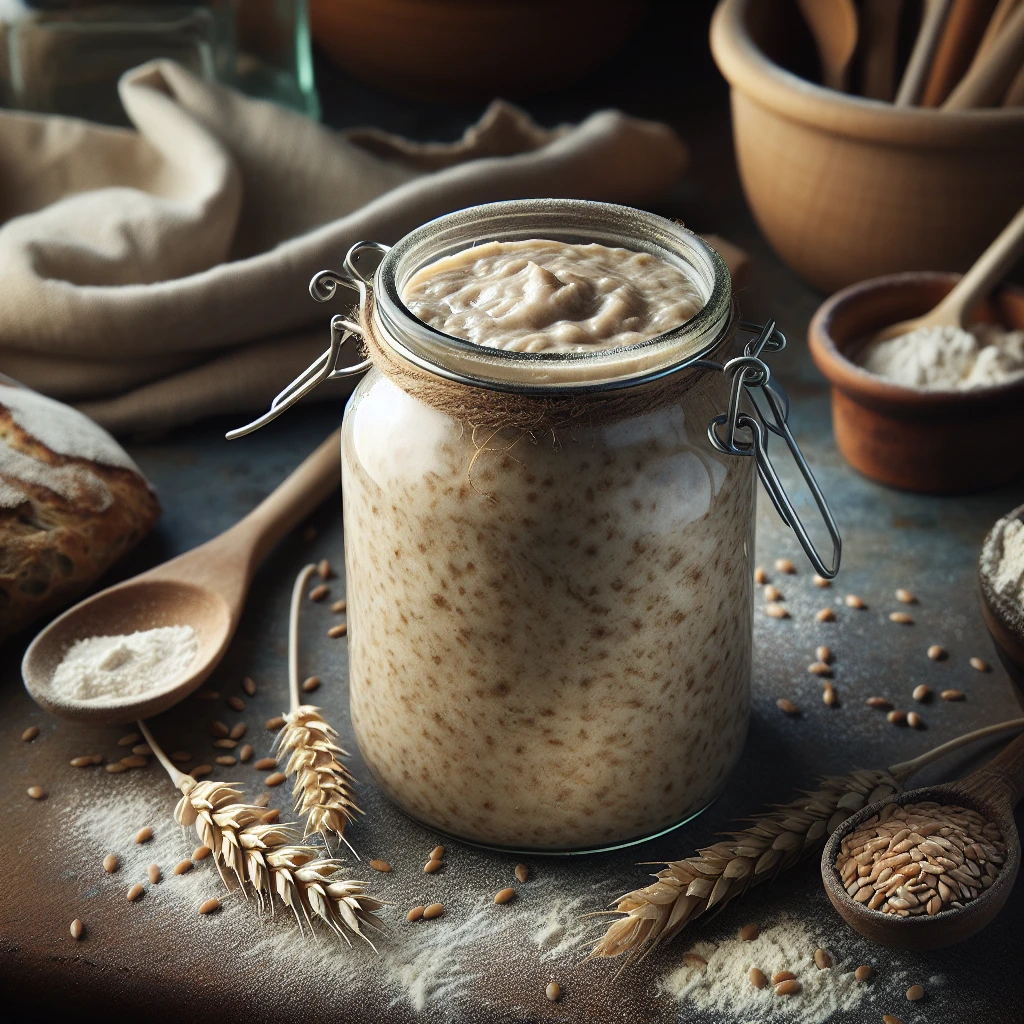
If you’ve ever wanted to dive into the world of sourdough but felt a bit intimidated, this Tangy Rye Sourdough Starter is your perfect entry point. With a hint of sweetness from honey and a tangy kick from apple cider vinegar, it's both unique and rewarding to make from scratch.
Rye flour is the backbone of this starter, providing a distinct, earthy flavor and a nutrient-rich environment for wild yeast. All-purpose flour is introduced later to balance the heaviness of rye with a bit of lift. Water is the essential medium that activates the flour and begins the fermentation process. Honey adds a subtle sweetness that not only enhances flavor but also feeds the yeast. Apple cider vinegar kicks off the tanginess and helps cultivate the perfect sourdough environment.
This tangy rye sourdough makes an excellent base for a variety of breads. Try it in a classic loaf for a hearty sandwich or pair it with sharp cheeses and cured meats on a charcuterie board. Its strong flavor also holds up well with rich spreads like butter mixed with herbs or garlic.
Start on Day 1 by grabbing a large glass jar. Combine 1 cup of rye flour and 1 cup of water. Stir well until no dry flour remains. Cover the jar loosely and let it sit at room temperature for 24 hours. This gets the fermentation process started.
On Day 2, you'll want to discard half of the starter. Don’t worry; this is normal and helps concentrate the yeast. Add 1/2 cup of rye flour and 1/2 cup of water, then stir well. Cover and let it rest again at room temperature for another day.
Day 3 is when things get exciting. Discard half of the starter once more, then mix in 1/2 cup of rye flour, 1/2 cup of all-purpose flour, and 1/2 cup of water. Add in the honey and apple cider vinegar to introduce a sweet and tangy element to the mix. Stir, cover, and let it rest.
From Day 4 to Day 7, you'll repeat the process of discarding half and replenishing with 1/2 cup each of flour and water. By the end of Day 7, your starter should be lively and bubbly, indicating it's ready for baking.